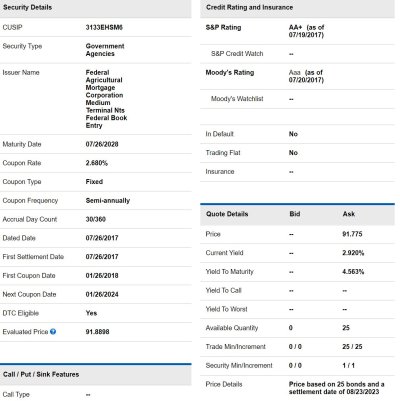lem1955
Recycles dryer sheets
- Joined
- Mar 1, 2007
- Messages
- 315
I made a spreadsheet with all the CD's and Bonds in my portfolio. Columns include Quantity, Net amount I paid (including commission fees, and accrued interest), coupon, Settlement Date and Maturity Date. What is the formula to calculate my average rate of return if I hold each to maturity?

